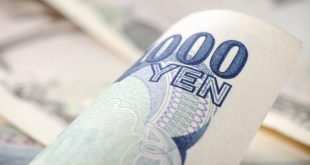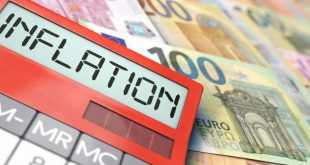Despite solid US data, the USD/JPY pair is currently down 0.35% at 145.70; DXY is up 0.51% to 103.718 but is unable to support USD/JPY. Retail sales in Japan increased by 6.8% YoY, exceeding expectations, but a disappointing 2.4% decline in industrial production adds to the BoJ’s policy dilemma.
After hitting a daily high of 146.22, the dollar depreciates against the Japanese Yen (JPY), closing back below 146.00. Despite better than anticipated data from the US, the USD/JPY failed to take off. The price of the pair is 145.60, down 0.4%.
The majority of US Dollar-pegged currency pairings trade in a turbulent manner due of a busy weekly economic agenda. The buck was really anxious after the sessions on Tuesday and Wednesday. However, it regained some of its composure against most G10 FX currencies, except for the Japanese Yen.
The US Commerce Department said that the Core Personal Consumption Expenditure (PCE), the favoured inflation indicator of the US Fed, increased as forecasted, by 4.2% YoY and 0.2% MoM, respectively. In terms of overall inflation, PCE stayed the same at 3.3% YoY and 0.2%.
The US Department of Labour said that Initial Jobless Claims for the week ending August 26 were 228K, which was lower than the 235K expected. This runs counter to the most recent jobs figures, which indicated that the labour market was slowing down.
The US Dollar (USD), which reached a bottom and is again rising, is supported by today’s data combined with earlier US job releases, month-end flows, and the US Dollar Index (DXY). The DXY index, which measures how well a basket of six currencies performs against the USD, rises 0.51% to 103.718.
At 2.1% in the second quarter, economic growth has slowed down but is still higher than the previous projection of 2%. The US Commerce Department’s assertion that consumer spending is stable and increased by 0.8% in July may help to restrain the Fed.
The CME FedWatch Tool, which shows traders’ expectations for rising borrowing costs in the US, shows that the Fed will maintain its current policy of keeping interest rates steady at its September meeting. However, the likelihood of a 25 bps hike in November is still 44.1%.
Raphael Bostic, president of the Atlanta Fed, said the policy was sufficient restrictive to move inflation towards the US central bank’s 2% target over a “reasonable” time frame.
On the Japanese front, policymakers at the Bank of Japan (BoJ) are divided over whether to pursue continued stimulus or a normalisation of monetary policy. Toyoaki Nakamura, a member of the BoJ’s board, stated that while rising import prices have caused inflation, it is premature to tighten monetary conditions. He further stated that the BoJ would no longer require the Yield Curve Control (YCC) after the “deflationary mindset” had been eliminated.
Data-wise, Japan’s retail sales increased by 6.8% in July, exceeding the 5.4% YoY projected growth rate, but Industrial Production fell by -2.4%, disappointing investors who had anticipated a drop of -1.4%.

 Noor Trends News, Technical Analysis, Educational Tools and Recommendations
Noor Trends News, Technical Analysis, Educational Tools and Recommendations




